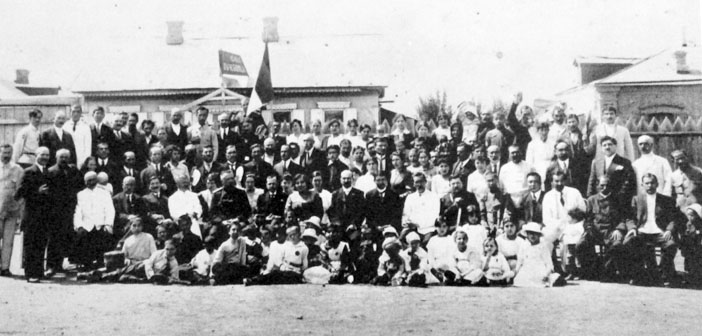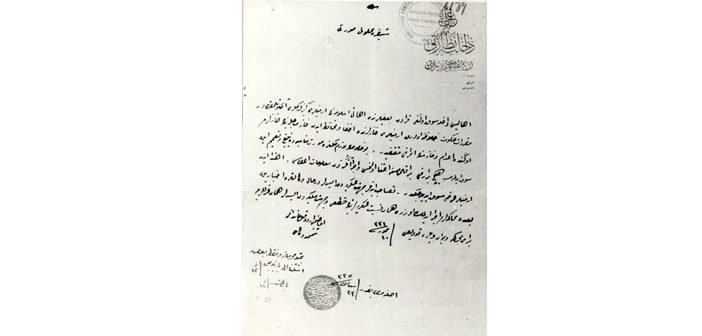Following the evacuation on the night of 21 February Saturday by military operation of the Suleyman Shah Tomb and the affiliated Commemoration Station, the only piece of land that belongs to Turkey that lies outside of its borders, attention is now focused on the Eşme region in Syria, officially announced as the new location for the tomb. However, the region Ankara has declared as the new destination of the “heritage of forefathers” was along the deportation route of the Armenian Genocide a century ago.
The Eşme region, which was located on the route of the convoys that departed both from Urfa, and from Birecik and continued to Cerablus and then to Deir ez-Zor in 1915, was later divided by the border drawn between Turkey and Syria. The forefathers of Suphi Yavuz, the Village Head of the Eşmeler Village on the Turkey side of the border, were also from the families that lived on the Syria side of the border before the border was drawn. Yavuz states that the people of the region always remember the Armenians in a positive light: “Armenians are always remembered as very intelligent and hard-working; and they are always referred to as trustworthy. The elders of the region tell us that there used to be Armenian villages connected to Birecik.” Suphi Yavuz also states that the people of the region do not speak about how the Armenian population was destroyed.
However, Birecik and its environs are of great significance in the history of the Armenian Genocide. Nıvard Şirinyan, who spoke to Verjine Svazlian who compiled the memoirs of those who survived the Armenian Genocide, was among those who passed through Birecik in 1908 when she was 5-6 years old: “Before the massacre we lived in Tokat, we were very wealthy, we had everything. They first took the men, and never brought them back. We heard that they had all been slaughtered… We passed through Kırkız, Malatya and Birecik, and reached Carablus. We reached Aleppo, there, my uncle’s two children died.”
While for some, Birecik was a stop on the deportation route, for some others, it was a turning point. Like Toros Petrosi Tercanyan, who was born in Sivas in 1912: “We stayed in the Birecik town camp close to the Euphrates River for a few months. One day, my mother was trying to make way through the crowds to reach the fountain when a Turkish soldier hit her on the head with the back of his rifle. My mother passed away a few days later. I embraced my dear mother’s body and did not want to let her go for days.”
Hakob Cırcıyan, who was born in Antep in 1900, and was forced into exile at 15, told the story of how Ironsmith Artin was killed in Birecik when he tried to escape from the convoy: “I wish I had gone blind so I did not see those horrific scenes. We arrived in Homs-Hama on foot… They had tied the hands and feet of children and women and lined them up along the shore of the Euphrates River to slaughter them. One of the exiles, Ironsmith Artin, broke his chains, jumped into the water, and reached Birecik swimming under water… But the Daciks [Turks] killed Artin with seven bullets.”
Historian Raymond Kévorkian, in his book ‘The Armenian Genocide’ states that losses were great on the Urfa-Birecik route, the first route of the exile of the Armenians. According to Kévorkian, only 20% (around 130 thousand people) of the population along this route had managed to reach the Syrian deserts.
The Aleppo Consul of Germany Walter Rössler, provided detailed information about the victims of the Genocide on the shore of the Euphrates in Birecik in the reports he wrote: “As I reported on July 17, the bodies on the Euphrates I mentioned before were visible for twenty-five days in Rumkale, Birecik and Cerablus. All the bodies had been tied together in twos, back to back, in the same way… A few days later, the number of bodies increased. This time, most of them were women and children.”






